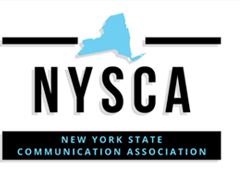Abstract
Via a small group project format, students conduct a close analysis of a persuasive message (a speech, an editorial, a position statement, etc.) Referring to models of argumentation (e.g. Toulmin [1958], Eemeren & Grootendorst [2004] , Rieke, Sillars, & Peterson [2012]), the team members work cooperatively to examine the communicator’s rhetorical choices in structuring claims, selecting data, and establishing warrants. After assessing the effectiveness of the message, each team presents its findings to the class.
This activity accomplishes several additional learning objectives, including: collaborative learning, critical analysis, applied communication, reinforcement of classic rhetorical canons and/or Aristotelian forms of artistic proof, and an opportunity for student presentation.
Recommended Citation
Plummer, Evelyn
(2013)
"Argumentation Analysis Presentation: Evaluating rhetoric-in-action,"
Proceedings of the New York State Communication Association: Vol. 2012, Article 8.
Available at:
https://docs.rwu.edu/nyscaproceedings/vol2012/iss1/8

